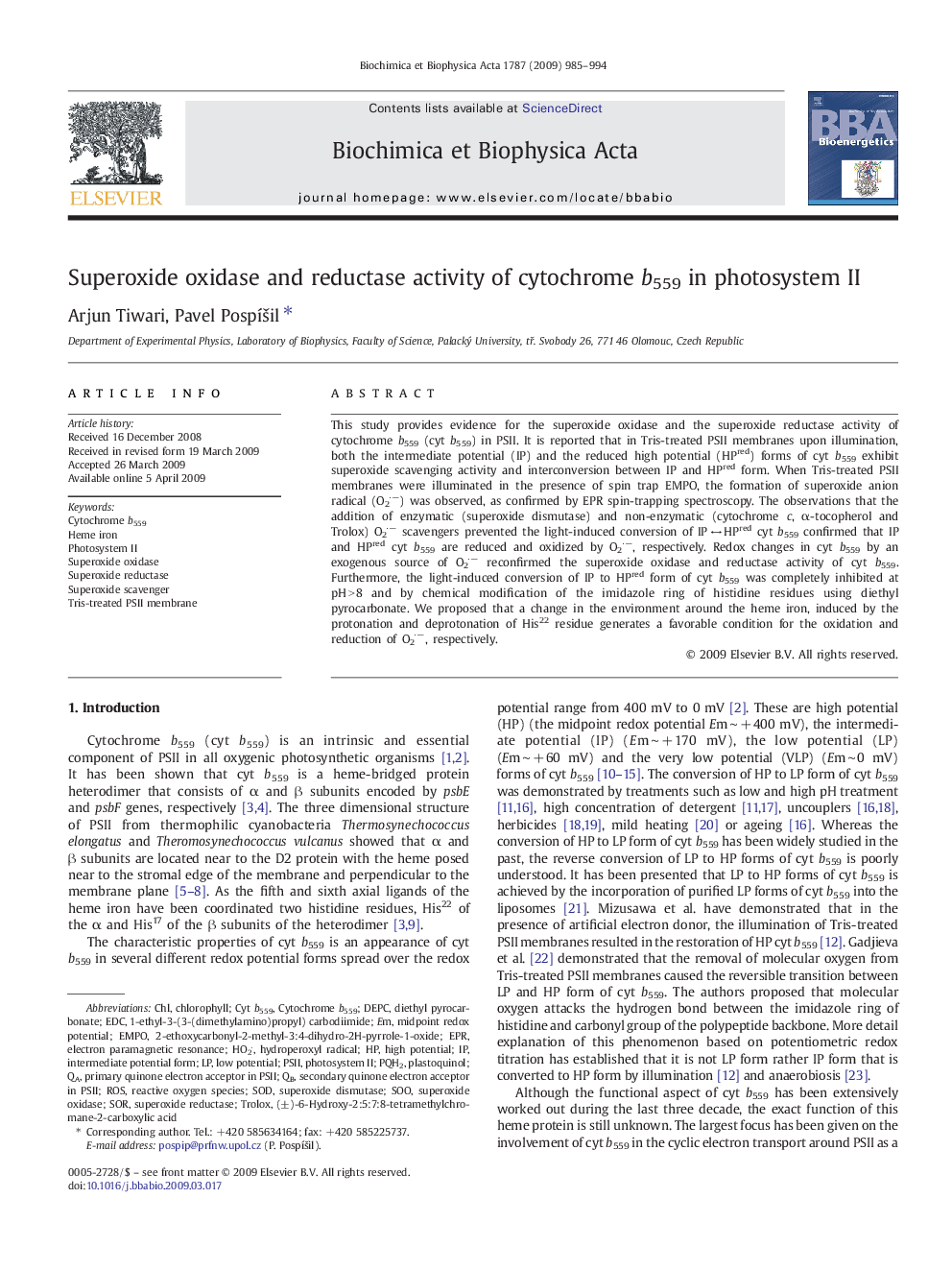| Article ID | Journal | Published Year | Pages | File Type |
|---|---|---|---|---|
| 1943134 | Biochimica et Biophysica Acta (BBA) - Bioenergetics | 2009 | 10 Pages |
This study provides evidence for the superoxide oxidase and the superoxide reductase activity of cytochrome b559 (cyt b559) in PSII. It is reported that in Tris-treated PSII membranes upon illumination, both the intermediate potential (IP) and the reduced high potential (HPred) forms of cyt b559 exhibit superoxide scavenging activity and interconversion between IP and HPred form. When Tris-treated PSII membranes were illuminated in the presence of spin trap EMPO, the formation of superoxide anion radical (O2−) was observed, as confirmed by EPR spin-trapping spectroscopy. The observations that the addition of enzymatic (superoxide dismutase) and non-enzymatic (cytochrome c, α-tocopherol and Trolox) O2− scavengers prevented the light-induced conversion of IP ↔ HPred cyt b559 confirmed that IP and HPred cyt b559 are reduced and oxidized by O2−, respectively. Redox changes in cyt b559 by an exogenous source of O2− reconfirmed the superoxide oxidase and reductase activity of cyt b559. Furthermore, the light-induced conversion of IP to HPred form of cyt b559 was completely inhibited at pH > 8 and by chemical modification of the imidazole ring of histidine residues using diethyl pyrocarbonate. We proposed that a change in the environment around the heme iron, induced by the protonation and deprotonation of His22 residue generates a favorable condition for the oxidation and reduction of O2−, respectively.
